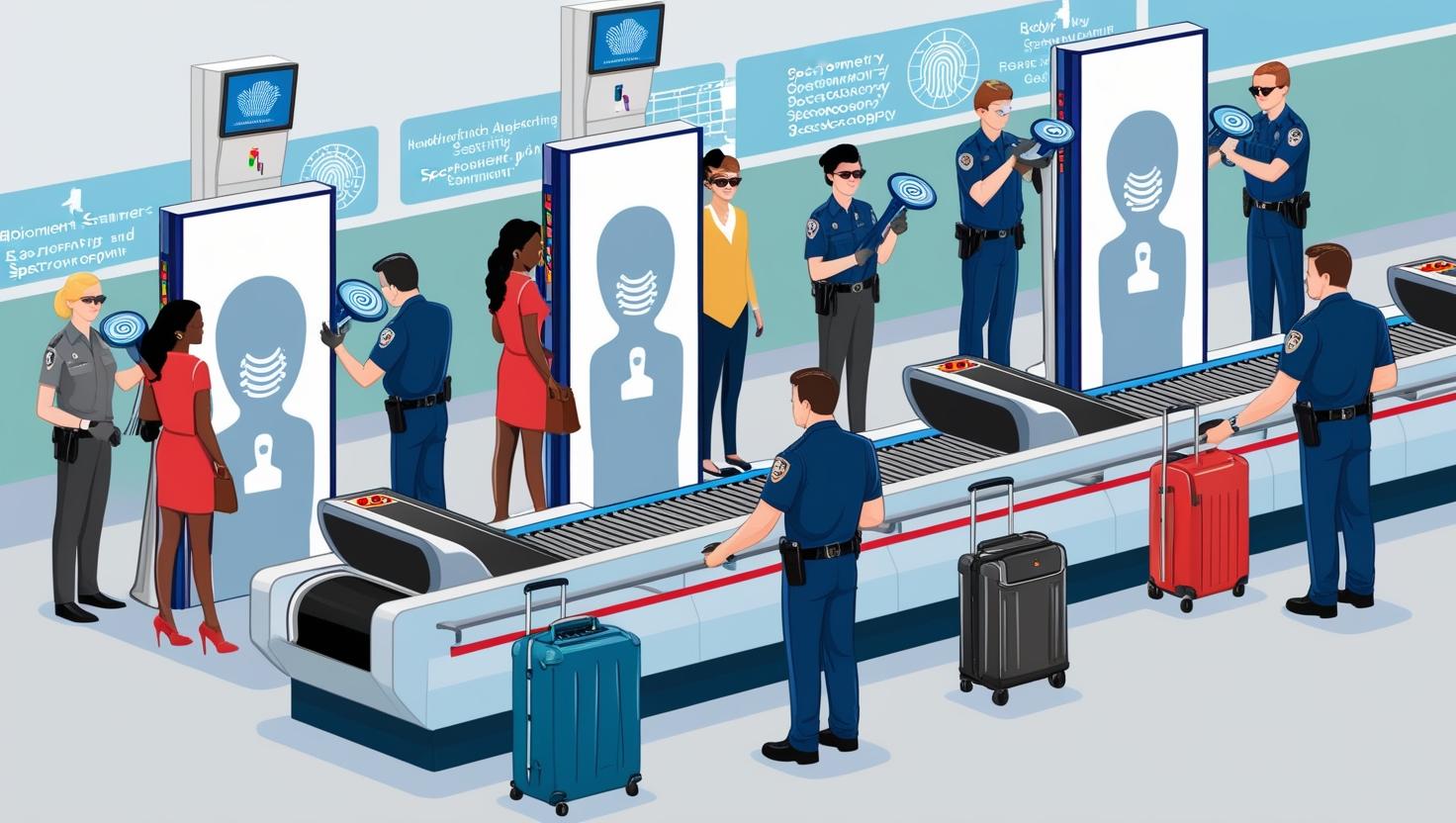In an increasingly interconnected and volatile world, the demand for advanced security screening technologies has never been higher. As global threats—from terrorism and smuggling to cyber-physical attacks—continue to evolve, governments, transportation hubs, and private enterprises are turning to sophisticated screening systems to fortify safety and operational resilience. According to market projections, the security screening market is set for strong and sustained growth, driven by technological advancements and heightened security concerns across critical sectors.
A Market Defined by Technological Diversity
The security screening ecosystem is complex, comprising a wide range of system types, each tailored to meet the specific needs of diverse use cases such as airports, border control, public venues, and commercial buildings. Among the most prominent technologies leading the charge are X-ray systems, electromagnetic metal detectors, biometric identification, and spectrometry-based detection. The global security screening market is anticipated to grow from USD 9.92 billion in 2025 to USD 13.80 billion in 2030, at a compound annual growth rate (CAGR) of 6.8%.
X-ray Systems: The Foundation of Modern Screening
X-ray technologies remain the backbone of global security screening infrastructure. X-ray body scanners are widely used in aviation security to detect concealed weapons, explosives, and other contraband on individuals without physical contact. These systems have become more advanced, now offering automated threat recognition (ATR) and reduced radiation exposure.
X-ray baggage scanners, used in both passenger and cargo screening, are seeing increased demand as global air travel rebounds post-pandemic. These systems provide high-resolution, multi-view imaging and are increasingly being integrated with artificial intelligence to enhance threat detection speed and accuracy.
X-ray handheld scanners and cabinet X-ray systems are becoming critical tools in smaller facilities and non-aviation applications, such as government buildings, correctional institutions, and high-risk public events. Their compact nature and ease of deployment make them ideal for mobile or on-demand security operations.
Download PDF Brochure @ https://www.marketsandmarkets.com/pdfdownloadNew.asp?id=264685413

Electromagnetic Metal Detection: Fast and Reliable
Electromagnetic metal detection systems, such as walk-through and handheld metal detectors, remain widely used for their reliability and speed. While not as precise as X-ray imaging, they are indispensable for quick screening in high-traffic areas like stadiums, schools, and courthouses. Newer models now feature advanced sensitivity settings, data logging, and network connectivity, improving compliance and traceability.
Biometric Systems: Identity Meets Security
With the rise of identity-centric security frameworks, biometric systems have become a vital component of security screening infrastructure. These systems use fingerprint, facial recognition, iris scanning, and even voice recognition to verify identities in real time. Airports, especially, are investing in touchless biometric kiosks to streamline passenger verification while reducing physical contact.
Beyond travel, biometric access control is becoming common in government facilities, data centers, and financial institutions. As AI improves biometric accuracy and spoof detection, adoption is set to accelerate further.
Spectrometry and Spectroscopy: Precision Threat Detection
Spectrometry and spectroscopy systems—including mass spectrometry, ion mobility spectrometry, and Raman spectroscopy—are the most advanced tools in chemical and explosive detection. These systems can identify trace levels of hazardous materials, narcotics, and explosive compounds with high precision. They are particularly vital at border checkpoints, shipping ports, and forensic labs.
While they are more expensive and technically complex, ongoing innovations in miniaturization and automation are making these technologies more accessible for a wider range of security operations.
Global Demand Driven by Geopolitical and Civil Security Challenges
The security screening market’s growth is not just a function of technology—it’s driven by the increasing frequency and sophistication of global threats. Rising geopolitical tensions, cross-border crime, drug trafficking, and cyber-physical attacks have created an urgent need for layered security infrastructure.
Airports and border control remain the dominant sectors, but there is significant momentum in urban safety programs, large-scale public events, and critical infrastructure protection. Governments in regions such as Asia-Pacific, Middle East, and North America are ramping up investments in screening infrastructure as part of broader national security modernization initiatives.
Looking Ahead: Integration and Intelligence Will Define the Next Phase
As security threats grow more complex, the future of screening lies in integration, automation, and real-time intelligence. Advanced analytics, AI-powered threat detection, and centralized monitoring platforms are transforming how data from various screening systems is processed and acted upon.
Moreover, the shift toward non-invasive and contactless screening technologies will define the next wave of innovation—driven by public health concerns and the need for faster, more comfortable screening experiences.
The security screening market stands at a critical juncture. With rising global threats and expanding technology capabilities, organizations are moving beyond basic detection toward intelligent, connected, and proactive security ecosystems. From biometric identity checks to AI-enhanced X-ray imaging and chemical spectrometry, this industry is rapidly evolving to meet the demands of a more unpredictable world.
Security Screening Market – Frequently Asked Questions (FAQ)
1. What is the security screening market?
The security screening market comprises technologies and systems used to detect prohibited items, threats, or unauthorized access across various environments, including airports, government buildings, public venues, and borders. It includes X-ray scanners, metal detectors, biometric systems, and chemical detection technologies.
2. Which technologies are included in security screening systems?
Key technologies include:
-
X-ray body and baggage scanners
-
Electromagnetic metal detection systems
-
Biometric identification systems (facial, fingerprint, iris)
-
Spectrometry and spectroscopy systems (e.g., Raman, IMS)
-
AI-powered analytics and threat detection software
3. What is driving growth in the security screening market?
Market growth is fueled by:
-
Rising global threats (terrorism, smuggling, cyber-physical attacks)
-
Increased air travel and border security concerns
-
Adoption of smart and contactless screening technologies
-
Government mandates and public safety initiatives
4. Which segment is expected to grow the fastest?
The biometric system segment is projected to grow rapidly due to the increasing need for identity verification and the shift toward touchless, AI-integrated screening.
